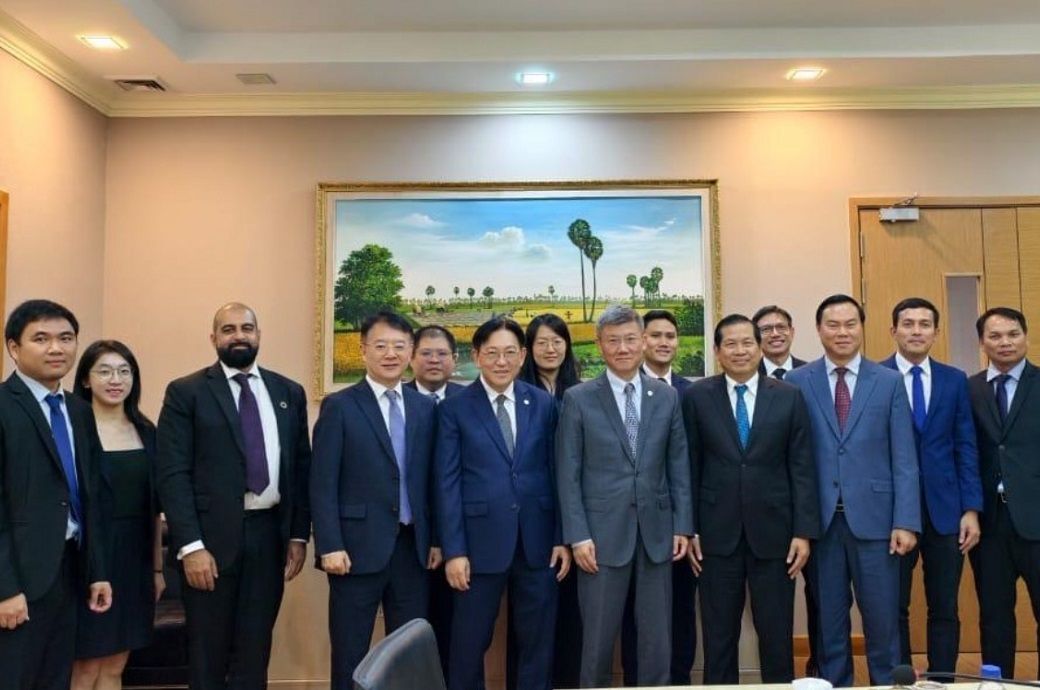
Cambodia’s economic growth is set to slow to 4.9 per cent in 2025, down from 6.0 per cent in 2024, as sharp US tariffs weigh on the country’s key garment exports, according to the ASEAN+3 Macroeconomic Research Office (AMRO). Growth is forecast to ease further to 4.7 per cent in 2026.
The AMRO mission, led by principal economist Dr Jinho Choi, with policy discussions involving AMRO director Kouqing Li and chief economist Hoe Ee Khor, assessed Cambodia’s macroeconomic outlook, vulnerabilities, and policy recommendations, AMRO said in a release.
“Due to the sharp rise in tariffs on its goods export to the US, Cambodia’s economic growth is expected to decelerate to 4.9 per cent in 2025 and 4.7 per cent in 2026. However, the economy is resilient and the government should take targeted measures to support the economy, especially the affected sectors,” said Dr Choi.
Inflation in 2024 was highly volatile. Although the consumer price index averaged just 0.8 per cent in 2024, inflation spiked in early 2025 and is forecast at 2.7 per cent for the year before moderating to 2.2 per cent in 2026, returning to pre-pandemic levels.
The current account surplus narrowed to 0.5 per cent of GDP in 2024, shifting into a deficit of 3.6 per cent in 2025, widening further to 5.5 per cent in 2026. Foreign direct investment inflows are projected to decline in 2025 amid investor caution before recovering in 2026.
AMRO highlighted that as a small, open economy; Cambodia remains highly vulnerable to external shocks, compounded by domestic financial sector vulnerabilities and long-term structural challenges.
The most pressing concern is the uncertainty over the duration and magnitude of new US tariffs, currently under a 90-day review. Prolonged trade protectionism could significantly depress global growth, impacting Cambodia through investment and trade channels.
In the longer term, Cambodia’s graduation from least developed country status in 2029 poses additional challenges to export competitiveness and borrowing costs.
AMRO urged Cambodia to adopt a multifaceted policy approach to strengthen resilience. In the short term, targeted fiscal support and flexible monetary policies should sustain economic activity, while regional cooperation must be enhanced to boost bargaining power and foster intra-regional trade.
Medium-term priorities include export diversification and improving domestic competitiveness. Swift implementation of the revenue mobilisation strategy is critical to addressing the budget shortfalls seen in 2023 and 2024.
The National Bank of Cambodia should maintain an accommodative monetary stance to support liquidity and economic growth but ensure that regulatory forbearance measures addressing NPLs are time-bound to prevent moral hazard. Strengthening financial stability frameworks—including the establishment of a deposit insurance scheme, banking resolution mechanisms, and crisis management frameworks—is urgently required.
AMRO commended the Cambodian government’s commitment to fostering high-quality, sustainable, and inclusive growth but stressed that achieving this vision requires concrete, well-implemented policies to support underperforming sectors, enhance competitiveness, and accelerate economic diversification.
Cambodia’s growth is set to slow to 4.9 per cent in 2025 and 4.7 per cent in 2026 due to US tariffs, AMRO said.
Inflation will rise to 2.7 per cent in 2025 before easing.
AMRO urged targeted fiscal support, monetary easing, and export diversification.
Financial stability frameworks and swift revenue reforms are also critical to boosting resilience.
Fibre2Fashion News Desk (HU)

